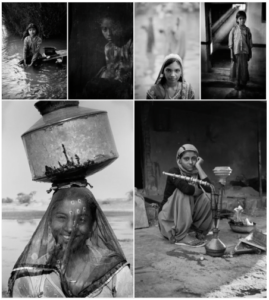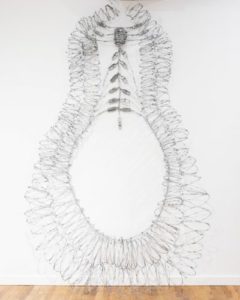Mandy Vahabzadeh is exhibiting a solo exhibition of black and white photographs at Leica Geneva through January 17, 2023.
From Leica (FR):
Photographier, toujours en argentique et de manière bienveillante, des femmes et des hommes à travers le monde. Voilà l’ambition de Mandy Vahabzadeh, qui réussit à allier habilement sensibilité et esthétique. Une exposition organisée à Genève rend hommage à son travail.
Inde. Vietnam. Indonésie. Laos. Japon. Sri Lanka. Depuis plus de trois décennies déjà, Mandy Vahabzadeh parcourt l’Asie notamment, en compagnie de ses fidèles appareils photographiques, des Leica M. Cette photographe professionnelle américano-suisse se concentre sur la pratique du portrait, jamais volés ni posés, prenant tout le temps nécessaire à traduire en image les personnages et les scènes qui retiennent son attention.
« Lorsqu’une personne est présente devant un appareil photo, gracieuse, le regard direct, sans la moindre trace de conscience de soi, c’est un cadeau pour le photographe qui disparaît alors. Un portrait, c’est une invitation à entrer en relation avec le spectateur. Avec la magie de la lumière, il devient alors poésie en noir et blanc », explique-t-elle.
C’est lors de son premier voyage en Inde – au Ladakh, en 1979 – qu’elle éprouve un choc, à la fois émotionnel et esthétique. « J’ai eu un véritable coup de foudre pour ce pays et pour son peuple », précise-t-elle. Si jusque-là elle photographiait en couleurs, le monochrome s’impose désormais à elle: à ses yeux, cette approche permet d’aller à l’essentiel.
Patiente et perfectionniste à la fois, Mandy Vahabzadeh sait parfaitement que, pour réunir les ingrédients essentiels d’une photographie réussie, il ne faut pas compter son temps. Faire des repérages minutieux. Et attendre le moment opportun. « En Asie, la population foisonnante impose au photographe son propre tempo. Il lui faut observer longuement son sujet, avant de savoir déclencher au meilleur instant, lorsque le triptyque personnage-composition-lumière s’avère idéal. »
En témoignent les magnifiques images présentées au Leica Store Genève dès le 15 décembre. Chacune d’elles montre à quel point la photographe établie à New York parvient à s’immerger dans l’environnement de ses sujets. Même de nuit, lorsque les conditions de lumière imposent une vitesse lente, un diaphragme grand ouvert, et que le contexte impose de la retenue. Comme sur cette image empreinte de sérénité où une femme prie debout, durant le Divali, la fête des lumières, les pieds dans le Gange, à côté d’une vendeuse de diya, ces lampes à huile traditionnelles.
Dans ce type de contexte, les Leica M s’avèrent de précieux alliés. La photographe utilise des M6 et M7 sur lesquels elle monte des objectifs de 50 et 75mm, ses longueurs focales préférées, et occasionnellement des 35 et 90mm. « Au début des années 80, je me suis tournée vers Leica en acquérant un M2, puis un M6 début 90. La raison s’avère très simple: la marque de Wetzlar constitue une référence indiscutable en matière de photographie plein format. Sans parler de l’esthétique de leurs produits, tout simplement unique. »
Mandy Vahabzadeh a d’ailleurs réservé un exemplaire du dernier Leica M6 – fidèle au modèle original sorti en 1984 – dès l’annonce de sa sortie. On ne change pas une équipe qui gagne!
Exposition au Leica Store Genève (Place de Saint-Gervais 1) dès le 15 décembre.
Biographie
Mandy Vahabzadeh est une photographe professionnelle américano-suisse, d’origine perse, résidant à New York depuis 1976. Elle a fréquenté le Pratt Institute, l’université de Columbia et la Parsons School of Design. Ses photographies – exposées à New York, Aspen, Santa Monica et Atlanta – ont donné lieu à la publication de deux ouvrages, Soul Unsold (Graystone Books, 1992) et un livre d’artiste (Small Editions, 2016), limité à 15 exemplaires.
View More on Leica’s Website (FR)
View on AnitaRogersGallery.com




